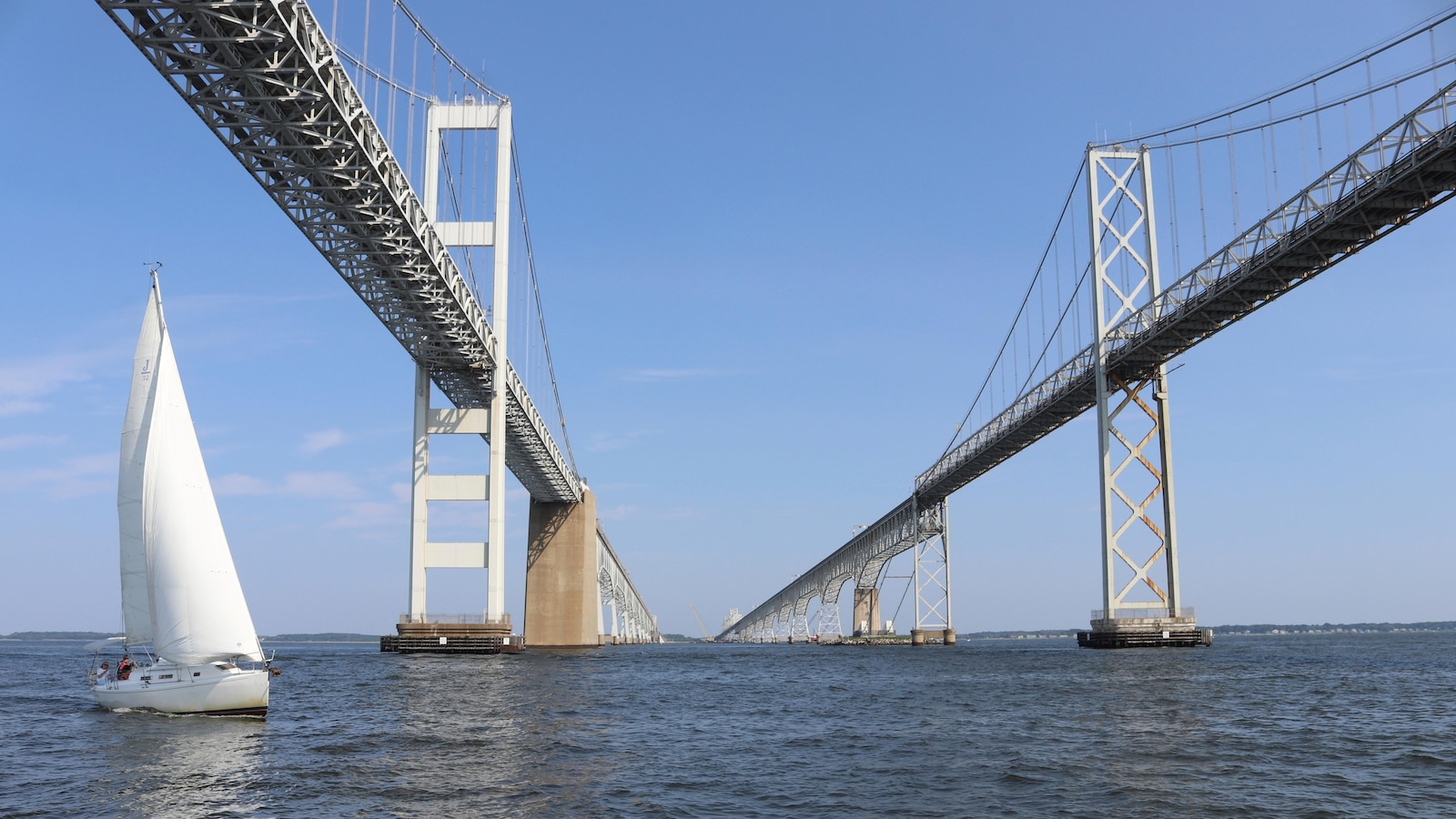
The overall health of the Chesapeake Bay, the nation’s largest estuary, received its highest grade since 2002 in an annual report released by scientists Tuesday: a C-plus.
Scientists at the University of Maryland’s Center for Environmental Science made special note of Pennsylvania’s efforts to block pollution from entering state waterways. Pennsylvania has faced criticism in the past for not doing enough to stop pollution from flowing into the bay.
The health of the bay is a reflection of what’s happening across its six-state watershed, which includes Delaware, Maryland, New York, Pennsylvania, Virginia and West Virginia along with the District of Columbia.
“The Chesapeake Bay restoration is seen as a global model of sustainability. The Report Card shows that the results are moving in the right direction but we need to pick up the pace of these efforts, particularly in light of climate change, which will make meeting the targets more difficult,” said Fernando Miralles-Wilhelm, president of UMCES, which compiles the report.
Bill Dennison, a UMCES professor and vice president, pointed out that the Upper Chesapeake Bay, which the Susquehanna River flows into, has the second-highest score of the 16 bay regions measured in the report and continues to improve.
“Pennsylvania has been getting a bad rap for quite a while now, and we’ve got to stop playing the blame game, and start looking at the data and let the data guide us in our restoration efforts rather than pointing fingers,” Dennison said in an interview.
Last year, Pennsylvania planted about 340 miles (550 kilometers) of riparian buffers, which are strips of vegetation planted next to streams and waterways to help protect habitat, Dennison noted. The state also has focused on increasing the use of cover crops in agriculture to reduce erosion, improve soil conditions and protect waterways from runoff pollution.
“That practice is a really important one for soaking up the excess nitrate at the end of a growing season that gets left on the fields,” Dennison said.
For the first time, researchers released the report in Pennsylvania at the Susquehanna River Basin Commission in Harrisburg.
“There is still much to do, but this is a strong indicator of progress,” said Adam Ortiz, the Environmental Protection Agency’s mid-Atlantic regional administrator. “After being off track, the partnership is now accelerating progress. In recent years, EPA has stepped up enforcement, accountability, and investments and it is paying off. These efforts have helped spur historic results among upstream and downstream states and all sectors, especially agriculture.”
This year’s UMCES report also is noteworthy because researchers said they are building a human-made debris indicator to understand the different types of contamination from items like plastic bags and bottles. Currently, not all of this debris is monitored, and the data is not collected uniformly across the bay and watershed. Researchers hope the information will be used to create targeted prevention and mitigation strategies.
“There’s a lot of things we can do on a personal-behavior level to reduce the plastics that end up in the bay,” Dennison said.
The report focuses on seven bay indicators that assess aquatic ecosystem conditions. Those include phosphorus and nitrogen measures in the water and how much oxygen is present at different depths. It also focuses on the condition of organisms living in or on the bottom areas of the bay, water clarity and aquatic grasses.
The report also focuses on bay watershed health, which includes ecological, societal and economic aspects, which aim to provide a more comprehensive view of the watershed. The watershed health scored 52%, or a grade of C, which is the same as the previous year.
The health of the Chesapeake Bay, the largest estuary in the United States, has long been a concern for scientists and environmentalists alike. In a recent annual report, scientists have given the bay a C-plus grade in terms of overall health, indicating that there is still much work to be done to improve its condition.
The Chesapeake Bay has faced a number of challenges in recent years, including pollution from agricultural runoff, urban development, and climate change. These factors have led to poor water quality, loss of habitat, and declines in fish and shellfish populations.
Despite these challenges, there have been some signs of progress in recent years. Efforts to reduce nutrient pollution, such as the implementation of the Chesapeake Bay Total Maximum Daily Load (TMDL) in 2010, have helped to improve water quality in some areas of the bay. Additionally, restoration projects aimed at restoring wetlands and oyster reefs have shown promise in helping to improve habitat for fish and other wildlife.
However, scientists caution that there is still much work to be done to fully restore the health of the Chesapeake Bay. While progress has been made in reducing nutrient pollution, levels of sediment and toxic contaminants in the bay remain high. Additionally, the impacts of climate change, such as sea level rise and increased storm intensity, pose additional challenges to the bay’s health.
Moving forward, scientists recommend continued efforts to reduce nutrient pollution, restore habitat, and address the impacts of climate change in order to improve the overall health of the Chesapeake Bay. Collaboration between government agencies, non-profit organizations, and local communities will be key to ensuring the long-term health of this important ecosystem.
In conclusion, while the Chesapeake Bay may have received a C-plus grade in this year’s annual report on its overall health, there is reason for cautious optimism. With continued efforts and collaboration, it is possible to improve the health of the bay and ensure that future generations can continue to enjoy its beauty and bounty.


